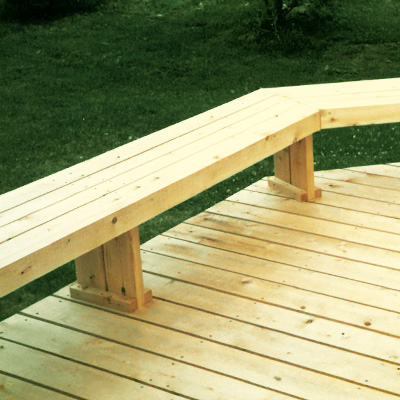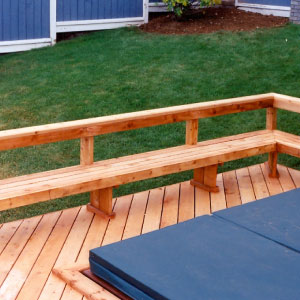The Ergonomics Of Building Benches
With Flare
DESIGNING A COMFORTABLE BENCH

In this article I will explain the details of how to design and build a bench that actually feels good to sit on.
It is all about the ergonomics and getting them within the right ranges.
Believe it or not, you need to understand this or it won't work.
A bench is just something to sit on like a chair. And whether it is around your dining room table or on your backyard deck, you want to get it right.
And there are a few critical measurements and things that matter. There's just no point in building something that isn't comfortable and you'll never use.
What To KNow Before You Start Building
Height:
The best height of the seat portion of a wooden bench is about 16”. Although its possible to go as low as 14” or as high as 18”, you will find that 16” just seems to feel right for most people. If you are unsure, measure a chair near your kitchen table to see for yourself.
Width:
The ideal width of the actual seat also seems be 16”. Although don’t panic too much if the arrangement of boards you selected results in a width slightly wider or narrower. Just keep the 16” number in mind.
Bench Seat Slope:
If you are anticipating that people will be sitting for long periods, consider sloping the actual seat about 1” lower in the back (over the 16” width). It's subtle but makes a noticeable difference. But this should only be done if you are including a back to your bench. It won’t look right without a back.
Backrest:
An ideal slope for a backrest is about 5 degrees, maybe a bit more. Beyond 10 degrees and it will start looking and feeling like an Adirondack Chair, without the comfort so don’t bother.
Wood is inherently hard and uncomfortable for sitting on over long periods of time. So these building tips will alleviate that a bit.
Seat Material
The most practical material to use for the seat of any bench is 2x4.
Four 2x4s spaced 1/4" apart create a 14 3/4" surface and with 2x4 or 1x4 edge trimming the final bench seat measures between 16 1/4" and 17 3/4". A very comfortable size.
2x2s are also excellent for the seating surface. You can take a look at how I used them for a built in patio bench and see if this way might be a good option.

Legs

Of course building something that looks and feels right requires some design decisions.
For a clean and simple look, I often use two 2x6s separated by a 1/4" gap as the leg component for the bench.
And 2x2s as cleats for the deck to leg connection work very well. For the seat cleats, use 2x4s with the bottom corners cut at 45 degrees or 2x2s. 2x2s are hidden nicely under the seat.
What's The Real Benefit Of This?
By far the most important reason anyone would choose to build benches around a deck is to enhance the overall look and feel of your space.
Or to get better use out of previously unused areas of and provide basic seating for outdoor gatherings.
If you haven't looked at the pictures of how bench seating can really make a difference, go back and check out the other article.
Home > Deck Benches & Extras > Building Benches


























